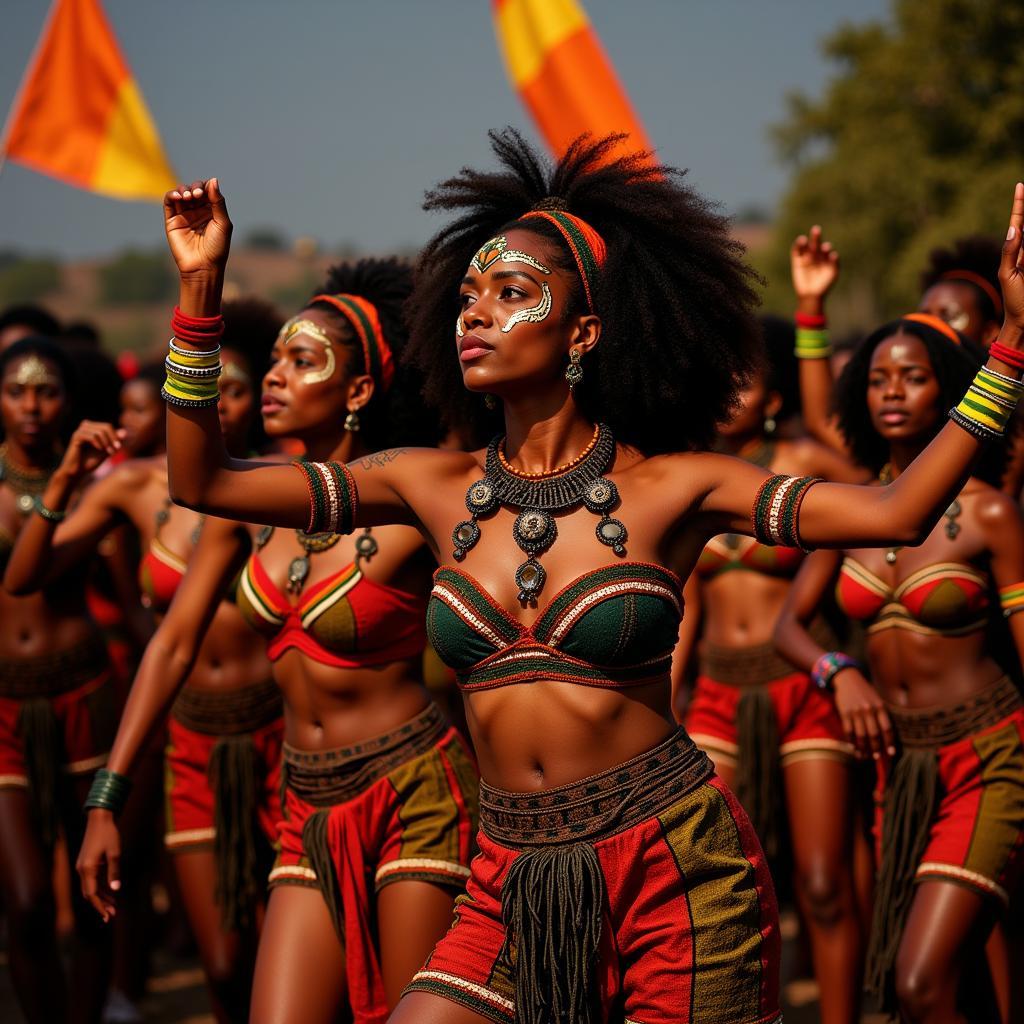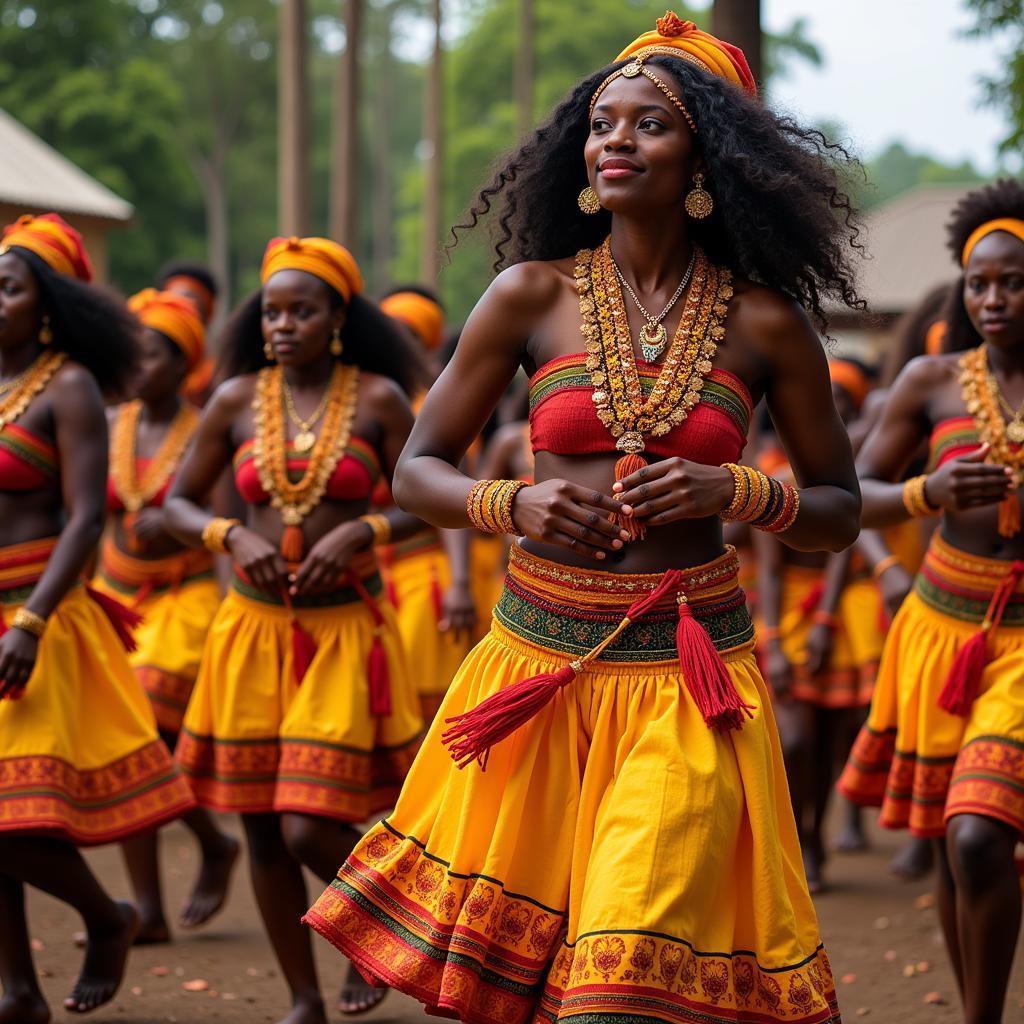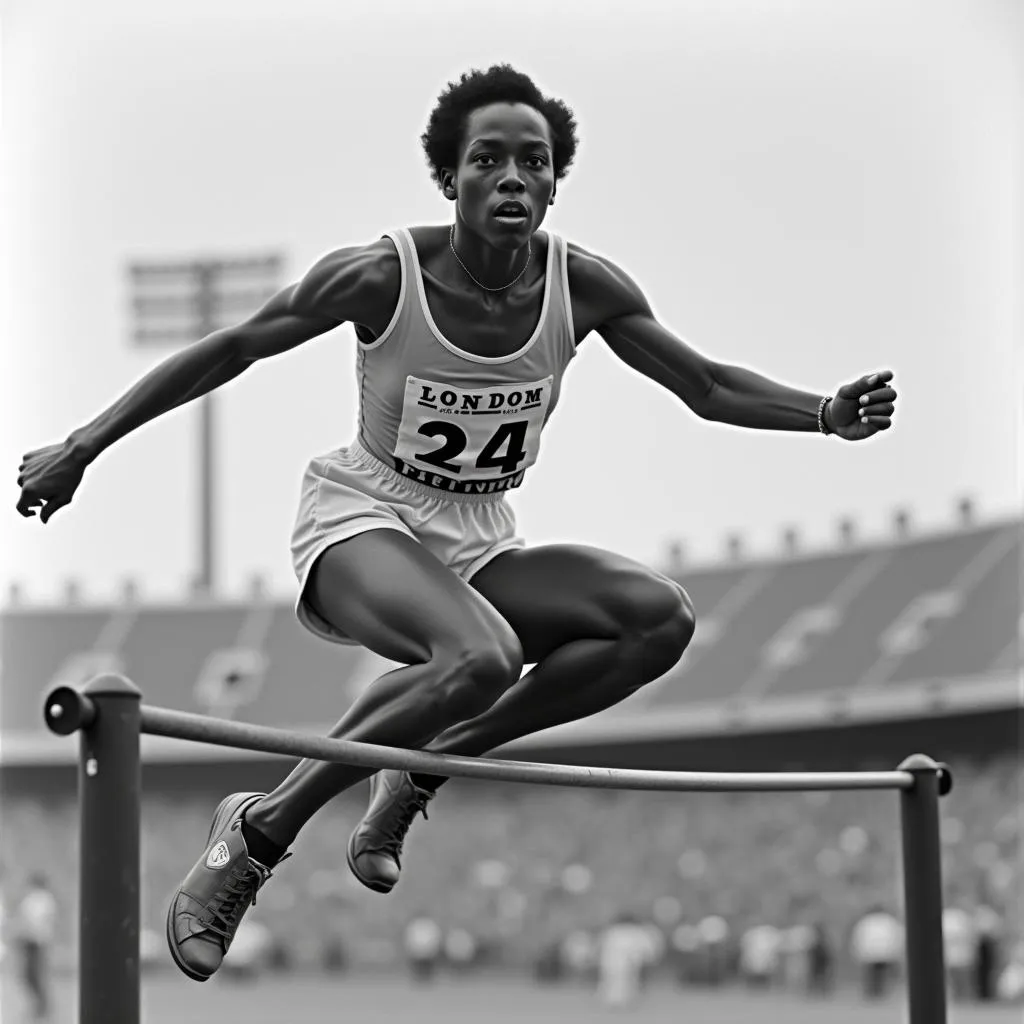African Goddesses Dance: Expressions of Power and Spirituality
From ancient rituals to modern stages, dance in Africa is more than just movement; it’s a language that speaks to the heart of the continent’s diverse cultures. And when it comes to stories told through dance, none are as captivating as those embodying the spirits of African goddesses. These dances, imbued with power and grace, offer a glimpse into the rich tapestry of mythology, belief, and artistic expression that define Africa’s soul.
Unveiling the Divine Feminine: African Goddesses in Motion
 African Goddess Dance Ritual
African Goddess Dance Ritual
Across the continent, from the sun-drenched sands of the Sahara to the lush rainforests of the Congo Basin, myriad cultures have revered female deities who embody creation, fertility, wisdom, and justice. These goddesses, often depicted as fierce protectors, nurturing mothers, or wise ancestors, are not just mythical figures; they represent the very essence of life, death, and rebirth. And what better way to connect with their divine energy than through the expressive power of dance?
The Language of the Orishas: Yoruba Dance Traditions
 Yoruba Dancers Honoring Oshun
Yoruba Dancers Honoring Oshun
In the Yoruba pantheon of West Africa, female deities known as Orishas play pivotal roles in the cosmic balance. Each Orisha possesses unique attributes reflected in their dedicated dances. For instance, Oshun, the goddess of love and water, is celebrated with graceful, flowing movements that mimic the river’s current. Her dances are characterized by sensuality and elegance, embodying her allure and life-giving power.
On the other hand, Yemoja, the Orisha of motherhood and the ocean, is honored with dances that evoke the vastness and depth of the sea. Her movements are powerful and rhythmic, reflecting her role as a protector and nurturer. These dances are not merely performances; they are acts of devotion, connecting dancers and observers alike to the divine energy of these powerful goddesses.
Beyond the Ritual: African Goddesses on the Modern Stage
The influence of African goddesses extends beyond traditional ceremonies, inspiring contemporary dancers and choreographers who fuse ancient traditions with modern sensibilities. These artists draw upon the rich vocabulary of African dance, incorporating elements like polycentrism, improvisation, and powerful footwork to tell new stories rooted in the ancient myths.
By reinterpreting these narratives through a modern lens, they challenge stereotypes, celebrate female strength, and offer fresh perspectives on the complexities of African identity. These performances are a testament to the enduring power of these ancient stories to resonate with audiences across cultures and generations.
Experiencing the Divine: Where to Witness African Goddess Dances
While witnessing traditional rituals honoring African goddesses often requires deep cultural immersion and respect for local customs, opportunities to experience the power of these dances are increasingly accessible. Dance companies around the world draw inspiration from these traditions, offering breathtaking performances that celebrate the dynamism and diversity of African dance.
Conclusion
The dances of African goddesses are not merely spectacles; they are living expressions of cultural heritage, spiritual devotion, and artistic brilliance. Through rhythmic movements and evocative gestures, they offer a glimpse into the heart of Africa’s rich spiritual traditions and the enduring power of the feminine divine. So, the next time you encounter a performance inspired by these powerful deities, remember that you’re witnessing more than just a dance; you’re witnessing a story thousands of years in the making.



